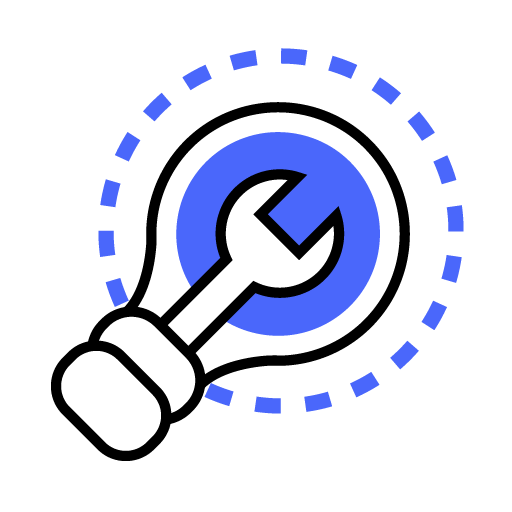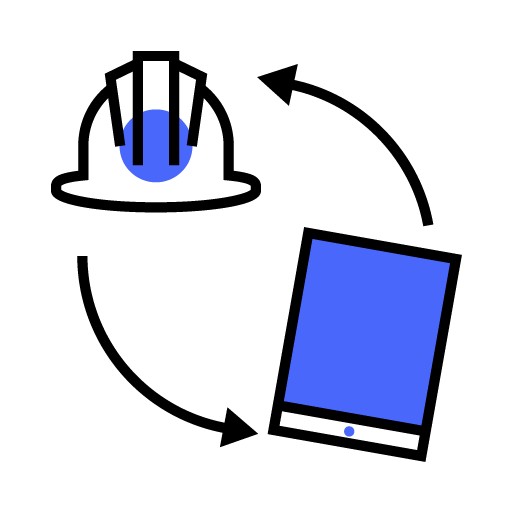Global power generation companies are facing major disruptions as the means by which power is created, maintained, and distributed evolve.
Examples include:
- New generation technologies and the increasing electrification of society is creating a more dynamic landscape with different loads, demand rates, and generation patterns, presenting an opportunity for companies to optimize utilization and achieved power price.
- Assets and infrastructure are aging, requiring new models to understand patterns at different stages of the equipment life cycle in order to change how scheduled maintenance work is prioritized and completed.
- Technologies such as 3D and robotics are improving the coordination and safe execution of field activities, giving experts a clear overview of parallel activities and physical conditions while reducing the need for traveling and physical presence in the field.
In the face of these changes, power generation companies must be willing to adapt to new opportunities and trends to remain operable and avoid real existential risk. The organizations that act now to supercharge their operations with data won’t just keep up, but stay ahead of the pack.
Here are some of the top digitalization trends reshaping the power generation industry, as well as opportunities in areas such as smart maintenance, revenue optimization, and field work.
Digitalization trends in the power generation industry
Digital technologies will bring about competitive growth and deliver new value in the power generation industry. Transforming core processes can deliver unprecedented gains for energy companies -- through improved decision making, greater efficiency, improved safety, and risk reduction.
The World Economic Forum estimates that digital transformation in the global electricity sector could unlock $1.3 trillion in unrealized value from 2016 to 2025. The companies that make data available in a way that is intuitive to human users and to the algorithms at work behind revolutionary applications will create a foundation for the human creativity and innovation that the industry needs to tap into that value potential.
Traditional power generation companies will remain a critical component to global energy supply over the next decade. During that time, these players will emerge to become the most efficient, data-driven power generation companies in the world. Digitalization will enable these companies to close the gap on business performance with meaningful advancements in data-driven planning, process optimization, improved safety and maintenance execution, and intelligent asset life cycle management.
Listen to how Hafslund Eco, Norway’s second largest hydropower producer, is navigating the times - about digital-driven business models and what the future could hold for renewables in Europe:
Even as traditional energy players retain predominant control of the world’s energy supply, wind and solar power will continue their meteoric rise. Renewables will differentiate themselves through digital resources, however, where big data and advanced analytics platforms are already at the foundation of these younger companies. Renewable stakeholders perceive digitalization as “enterprise-wide platforms that will enable current and future business success,” Boston Consulting Group reports. “They are embracing a digital and agile way of working by driving processes to deliver a minimum viable solution and then push through rapid cycles of improvement.”
Digitalization opportunities in the power generation industry
Generally, the most valuable benefit of digitalization is its ability to automate manual processes and make insights more accessible, both freeing humans from tedious tasks and enhancing their creative capacities simultaneously. The value potential is perhaps the greatest within the following three areas:
Opportunity No. 1: Data-driven smart maintenance

McKinsey estimates technology-enabled operations that include “workflow optimization, condition-based maintenance, process digitization, and agile working” can increase plant efficiencies by 3% and reduce average generation costs by 5% to 20%, depending on the utility.
Digitalization makes real-time monitoring, remote control, and predictive maintenance of assets possible, greatly improving the value companies and their customers gain from their capital investments. Intelligent analysis of assets and infrastructure help decision makers identify and act on efficiency opportunities in operational and maintenance processes as well.
Opportunity No. 2: Revenue optimization

Digital tools and advanced analytics can help power generation companies of all types optimize asset life cycle management. For renewable energy companies, the use of insights provided by digital capabilities can bring down operating costs by as much as 60% to 70%, increasing the lifetime value of assets and contributing to future financial models. Asset life cycle management may have “the greatest value potential among all the digital initiatives,” contributing $480 billion over the next decade.
Digitalization can help power generation companies optimize utilization and achieved power price, and bring together the traditionally siloed organizations in power trading, production planning, and operations and management. With easy access to contextualized data, these teams can make data-driven decisions based on a unified overview of asset conditions and optimal operational patterns.
Opportunity No. 3: Coordinating and safely executing field work

Advanced analytics can leverage operational data, safety records, and even external sources to deliver comprehensive risk analyses to stakeholders. In turn, decision makers can develop more robust approaches for coordinating critical processes and reducing risk. And with data and visualizations at their fingertips, engineers can efficiently conduct field work, increasing safety, reducing waste, and saving time.
Act now on the digitalization trends reshaping the industry
Digital transformation in the power generation industry is not a new concept. For decades, ideas, technology, and resources have poured into digital programs aimed at curtailing the impending pressures caused by decreasing demand, decarbonization, and decentralization of power generation sources. This has resulted in a proliferation of new industrial data that is distributed across organizations and sites, but only truly valuable with contextualization and the proper transformations.
However, with so much value potential and the eagerness to explore advanced analytics, AI, machine learning, and more, industrial data architectures have become increasingly complex, unable to serve data consumers in a dynamic, scalable, and repeatable way. This leads to stalled digital transformation efforts, cost overruns, and inefficient use of human resources.
To succeed in the future, power generation companies need to act now on the digitalization trends reshaping the industry. Creating a strategic vision for digital, distributing digital skills across an organization, providing contextual data to data consumers, closing the divide between IT and OT, and moving from proofs of concept to production requires investing not just in data and tools, but also in processes and skills.
Digitalization can provide enormous opportunities to power generation companies prepared to adapt. By maximizing their capabilities with data, companies can build robust and reliable digital applications that enable smart maintenance, revenue optimization, and safer field work.
Unlocking this potential requires a new approach to DataOps and contextualization -- an approach that makes industrial data more accessible and meaningful to humans and machines, and helps teams collaborate better, scale more broadly, and innovate faster.
Learn more: Cognite’s Industry Solutions for the Power and Utilities Sector →
This post is an excerpt from the white paper Power the Future: DataOps and Contextualization in the Power Generation Industry.

